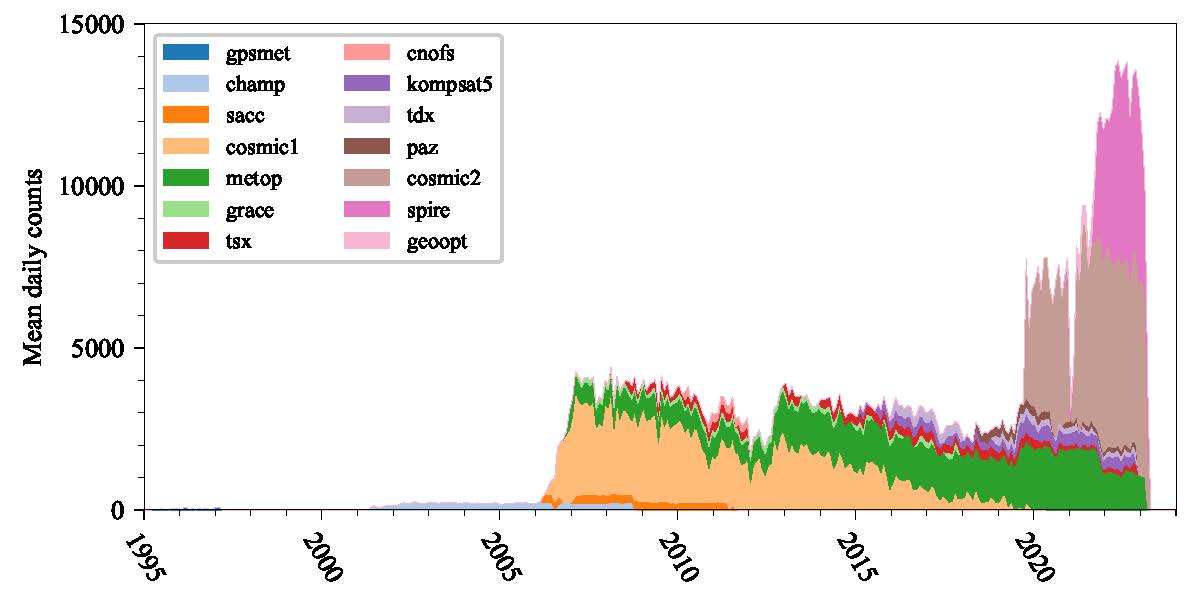Radio occultation (RO) by the Earth's atmosphere of the transmitted signals of the Global Navigation Satellite Systems' satellites has improved numerical weather prediction, has benefited atmospheric process studies, and benchmarked climate change by its strong traceability to the international definition of the second. Until now, research with RO has been isolated to the few centers that actually process the data and impracticable elsewhere because of limitations on data formats, organization and volume of the data, download bandwidth, and the lack of a database that can be queried before downloading data. An AER team led by Dr. Stephen Leroy and including Amy McVey and Mark Leidner has made RO data available in the Registry of Open Data of Amazon Web Services (AWS). RO data are freely available for download for the user and free to process and store for the manager of the repository. RO data as processed by the COSMIC Program Office at the University Corporation for Atmospheric Research, by the Radio Occultation Meteorology Satellite Application Facility (ROM SAF), by EUMETSAT, and by the NASA Jet Propulsion Laboratory are available beginning with calibrated (excess) phase, extending to bending angle and refractivity and to retrievals of pressure, temperature and water vapor. The same RO repository also contains a metadata database that permits simple querying, filtering, and download of data using a Python application programming interface provided by this same project. Four tutorial demonstrations are provided as jupyter notebooks to provide representative samples of code to perform common research activities with RO data, including database querying and analysis, inter‐center comparison of RO retrieval performance, and atmospheric process studies.

Figure. Stack‐plot of average daily occultations by month and radio occultation (RO) mission since the inception of Global Navigation Satellite Systems RO as a remote sensing technique. The average daily counts are determined by the total number of RO soundings in a month divided by the number of days in the month.
Citation: GNSS Radio Occultation Data in the AWS Cloud
S. S. Leroy, A. E. McVey, S. M. Leidner, H. Zhang, H. Gleisner
Earth and Space Science, 11, e2023EA003021, 2024

